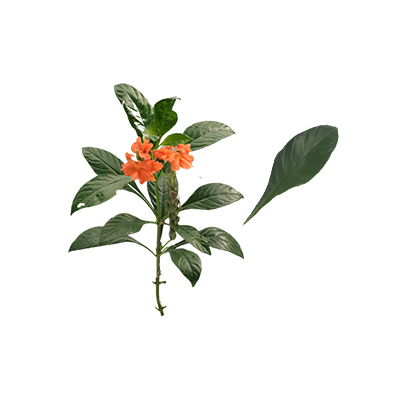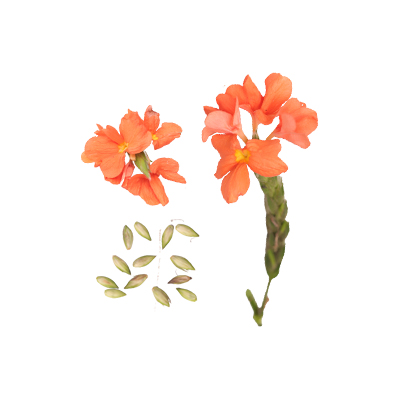Firecracker Flower
Crossandra infundibuliformis (L.) Nees
Acanthaceae
Location in our garden
Shading Area
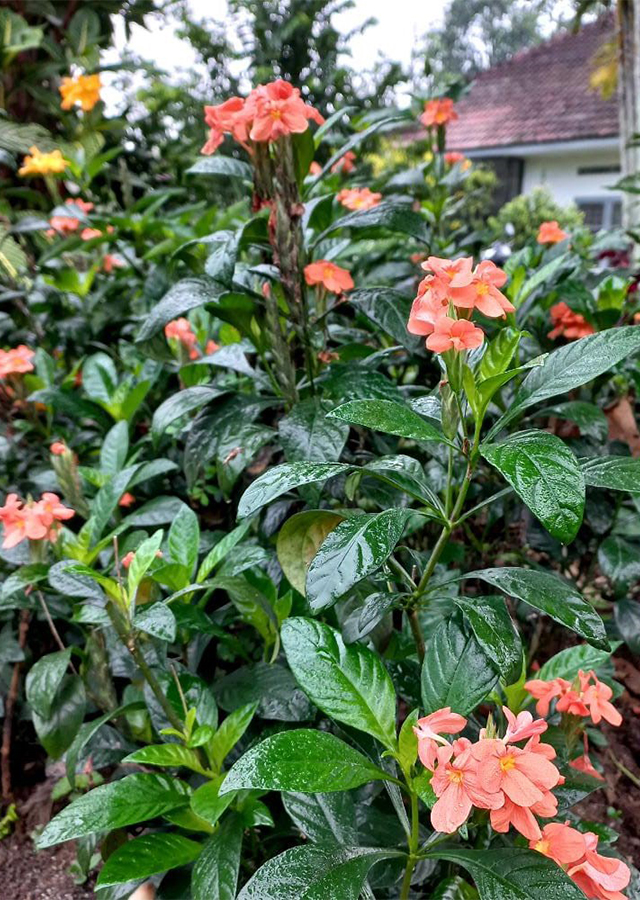
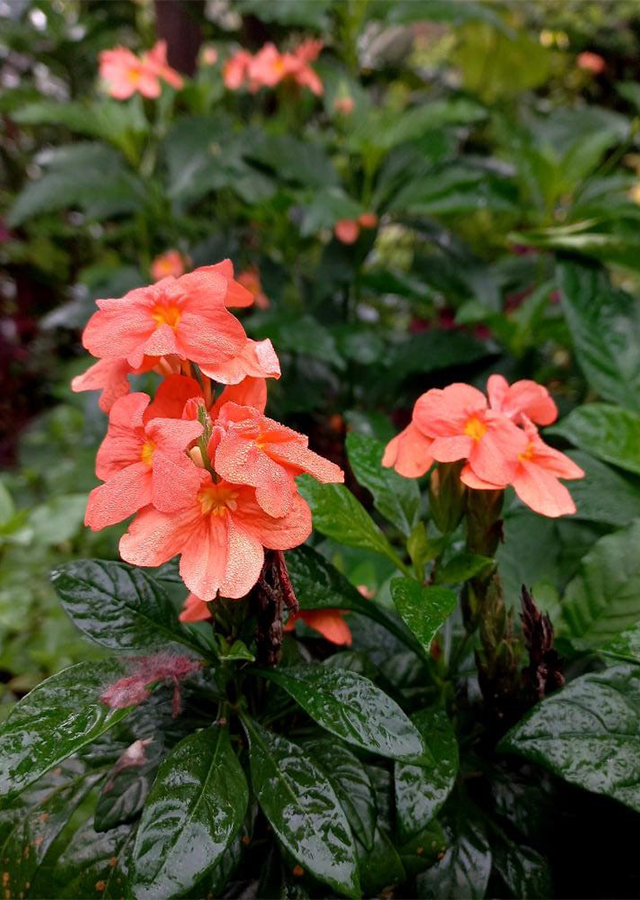
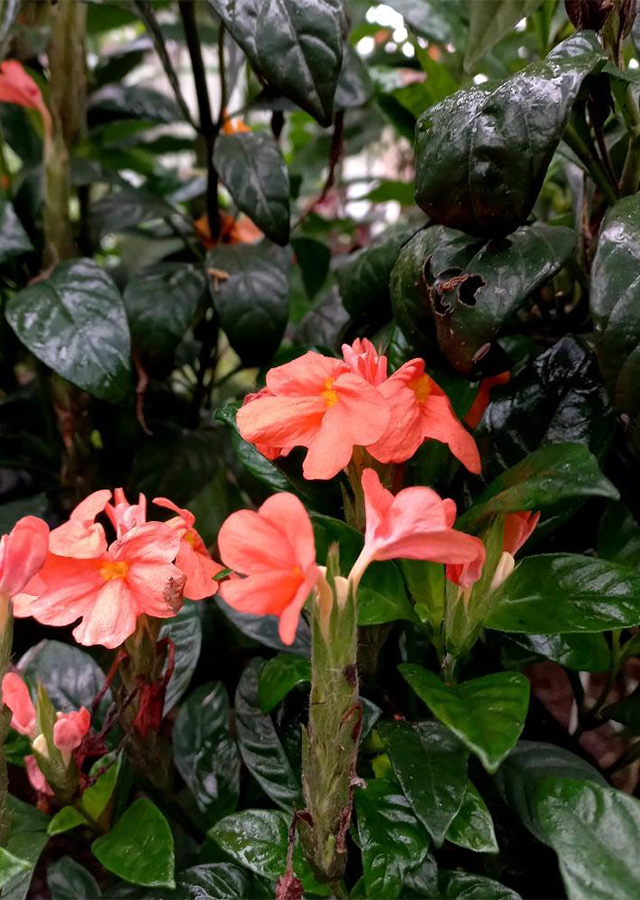
Synonym
Justicia infundibuliformis L.
Crossandra undulifolia Salibs.
Ruellia infundibuliformis (L.) Andrews
Habitus
Shrubs. An erect, perennial, low shrub of up to 1 m tall
Part Used
Leaves
Bark
Flowers
Fruit
Roots
Growing Requirements
Full Sunshine
Need Shade
Habitat
Shrublands
Terrestrial
Overview
Firecracker flower is native to Bangladesh, Burundi, Ethiopia, India, Kenya, Somalia, Sri Lanka, Zaïre and is introduced in Cuba, Dominican Republic, El Salvador, Haiti, Leeward Islands, Myanmar, Nicaragua, Puerto Rico, Trinidad-Tobago, Venezuelan Antilles, Vietnam, Windward Islands. This plant is often planted around the temple for decoration. In India and Sri Lanka, the flowers are combined with jasmine flowers to decorate women's hair. Besides being planted as an ornamental plant, firecrecker flower also has health benefits, and is used in traditional medicine.
Vernacular Names
Firecracker Plant, Crossandra, Tropic Flame.
Agroecology
Firecracker flower occurs in the foothills at altitudes of up to 1,300 m. It growing in fertile soil enriched with organic matter and having good drainage. It is sensitive to overwatering and waterlogged sites. Allow the soil to dry before re-watering.
Morphology
- Leaves are narrowly ovate to lanceolate (8 - 13 cm long). They droop slightly and occur in whorls of 3 - 4.
- Flowers are salverform; each flower has a thin tube (2.5 cm long) with 5 lobes (2 - 4 cm wide) that are perpendicular to the tube. The throat may be red or yellow. They are arranged in terminal inflorescences. Below the flowers, green, leaf-like bracts are arranged like a head of wheat. The bracts are covered in soft, white hairs. Flowering occurs throughout the year.
- Fruits are ellipsoid to oblong (1 cm long) and each contains 4 round seeds. They are classifed as capsules. Capsules are dry, dehiscent fruits.
Cultivation
In planting Firecracker flowers you can use the cutting method which is taken on the stems or branches of good parent flower stems. In this case, the best cutting can be done in the morning, using scissors where the stem cuttings must be done neatly. You need to note that the scissors used must be sharp so as not to damage the stem.
Chemical Constituents
Flavonoids, glycosides, alkaloids, saponins, steroids, terpenoids and tannins.
Traditional Medicinal Uses
Treat toothache, skin disease, venereal disease, syphilis, fever, headache, pain, wound healing and as an aphrodisiac. Has antioxidant, antibacterial, hepatoprotective, antifungal, anticandidal and larvicidal activity.
Part Used
Reference Sources
- National Park. 2020. Crossandra infundibuliformis (L.) Nees. https://www.nparks.gov.sg/florafaunaweb/flora/1/8/1884 Biodiversity India. 24-10-2021.
- India Biodiversity Plants: Crossandra infundibuliformis. https://indiabiodiversity.org/species/show/229384. 24-10-2021.
- Medicinal Plants. 2015. Crossandra infundibuliformis, Kanakambaram, Crossandra, Firecracker Flower, Кроссандра_воронковидная. . http://medplants.blogspot.com/2015/04/crossandra-infundibuliformis.html. 24-10-2021.
- S. Jency. 2013. Phytochemical Screening , Functional Group and Elemental Analysis of Crossandra infundibuliformis (L.) Nees. Flower Extract. Department of Bioinformatics, Karunya University. Indian Journal Of Natural Sciences Vol.4 / Issue 21/ December 2013. https://www.researchgate.net/publication/272679141_Phytochemical_Screening_Functional_Group_and_Elemental_Analysis_of_Crossandra_infundibuliformis_L_Nees_Flower_Extract. 24-10-2021.



